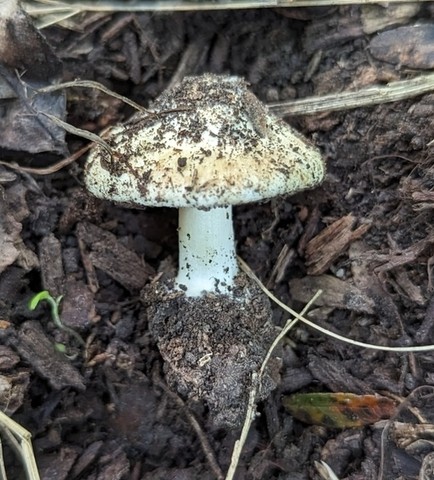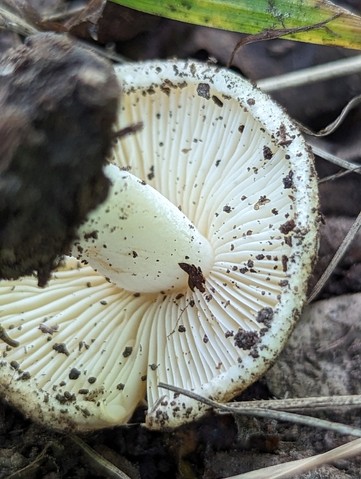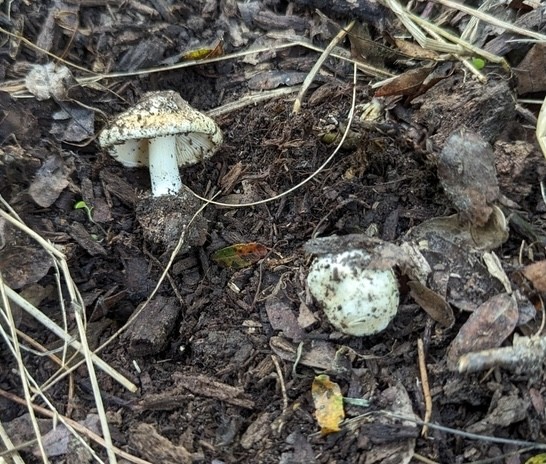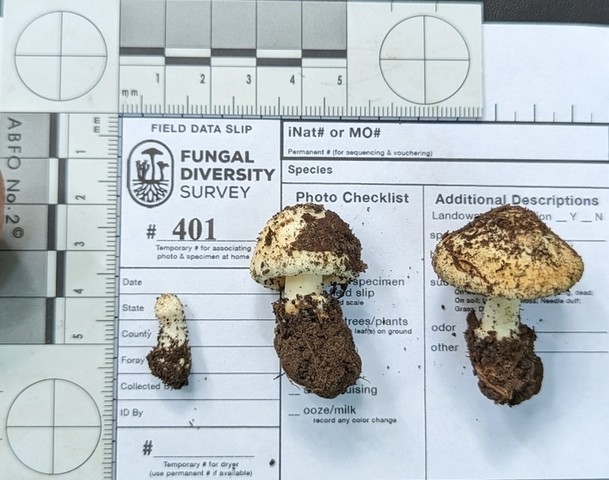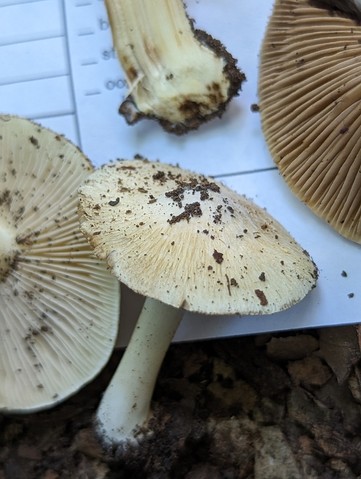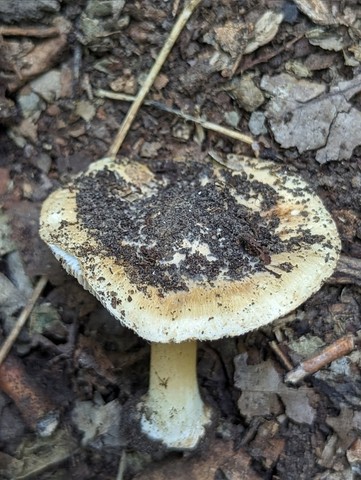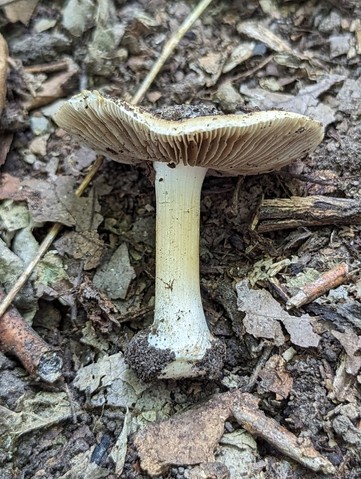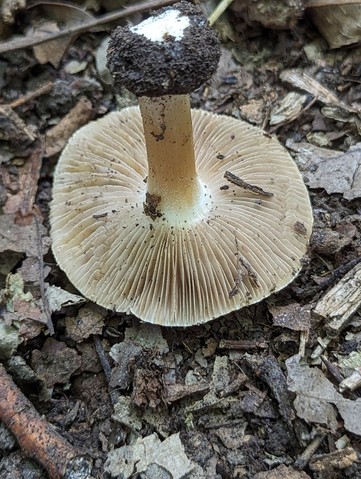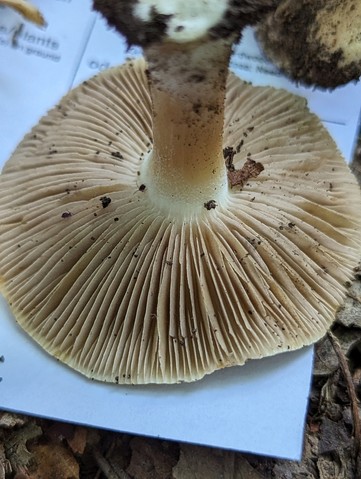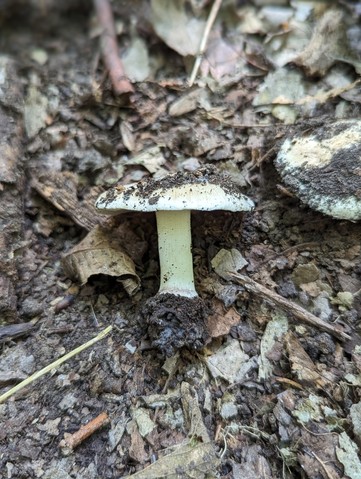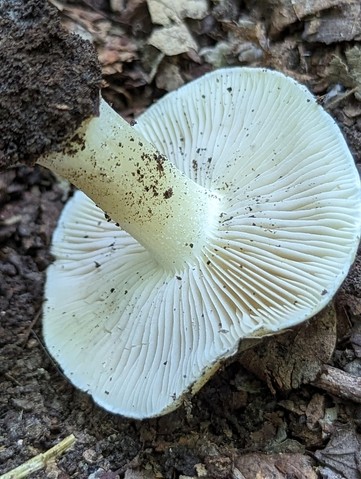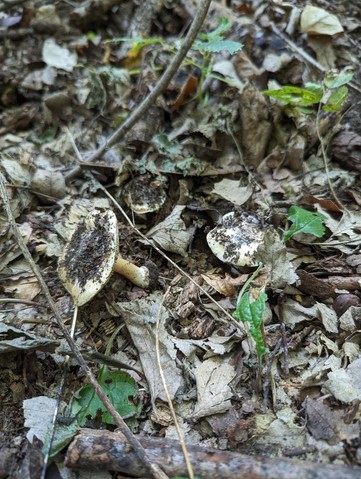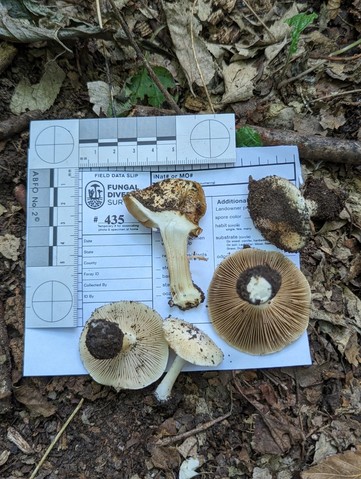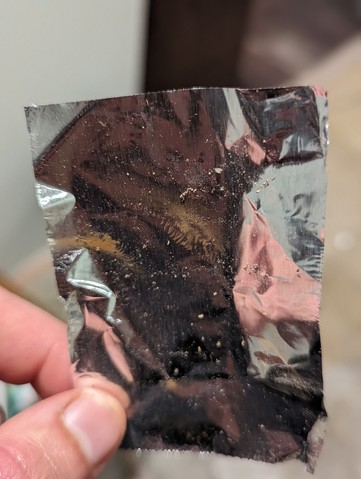Inocybe sp-IN49
Life > Fungi > Basidiomycota > Agaricomycotina > Agaricomycetes > Agaricomycetidae > Agaricales > Agaricineae > Inocybaceae > Inocybe
2024 DNA results of Inocybe sp-IN49 represent it as an undescribed species originally found in Indiana.
Members of these genus are known to be toxic. The toxin in question called muscarine. Please review the list of symptoms below.
The symptoms usually occur within 15-30 minutes of ingestion, and are focused on the involuntary nervous system. They include excessive salivation, sweating, tears, lactation (in pregnant women), plus severe vomiting and diarrhea. These symptoms may be accompanied by visual disturbances, irregular pulse, decreased blood pressure, and difficulty breathing. Victims normally recover within 24 hours, but severe cases may result in death due to respiratory failure. Atropine is a specific antidote, but must be administered by a physician. Dogs are particularly susceptible to the toxin muscarine. (Michael, 2024)
If you or someone you know has been poisoned by consuming wild mushrooms, call 9-1-1 and get the individual medical attention IMMEDIATELY. Afterwards, please report poisonings to the North American Mycological Association to contribute to our understanding of wild mushroom safety.
September 13th, 2023 Field Notes - Indian Cave State Park
Growing from rich soils in low, shady, riparian woodland area in mixed oak/hickory woodland.
- Cap Tan to light yellow, egg-shaped to campanulate, with dirt adhered to pileipellis (post viscid state). Inrolled margin.
- Lamellae white, free to adnexed and unequal.
- Stipe white, firm, and entire.
- Smell: faint and pleasant.
- Taste: faint to not distinctive.
September 29th, 2023 Field Notes - Indian Cave State Park
habitat: Terrestrial (on soil) to In forest
growth habit: Gregarious (growing as a group)
Cap: shape: plane (flat) to conic (cone) to umbonate (with bump); texture: fibrillose (thready); surface moisture texture: dry - shiny to viscid, sticky, tacky [1]; margin shape: straight; margin: striate (with lines) to split to undulating (wavy)
Gills: attachment: uncinate (with decurrent tooth); breadth: broad; thickness: average; spacing: subdistant to close; edges: even (entire)
Stem: locations: central; shape: equal to clavate (club); surface (same as cap plus): fibrillose (thready) to longitudinally striate; texture: pliable to fibrous to rigid to breaking with a snap; interior: solid
[1] With dirt adhered to pileipellis Smell: spermatic Spore Print: brown
References
Beug, M. (2024, April 23). Mushroom Poisoning Syndromes - North American Mycological Association. North American Mycological Association. https://namyco.org/interests/toxicology/mushroom-poisoning-syndromes/#muscarine
